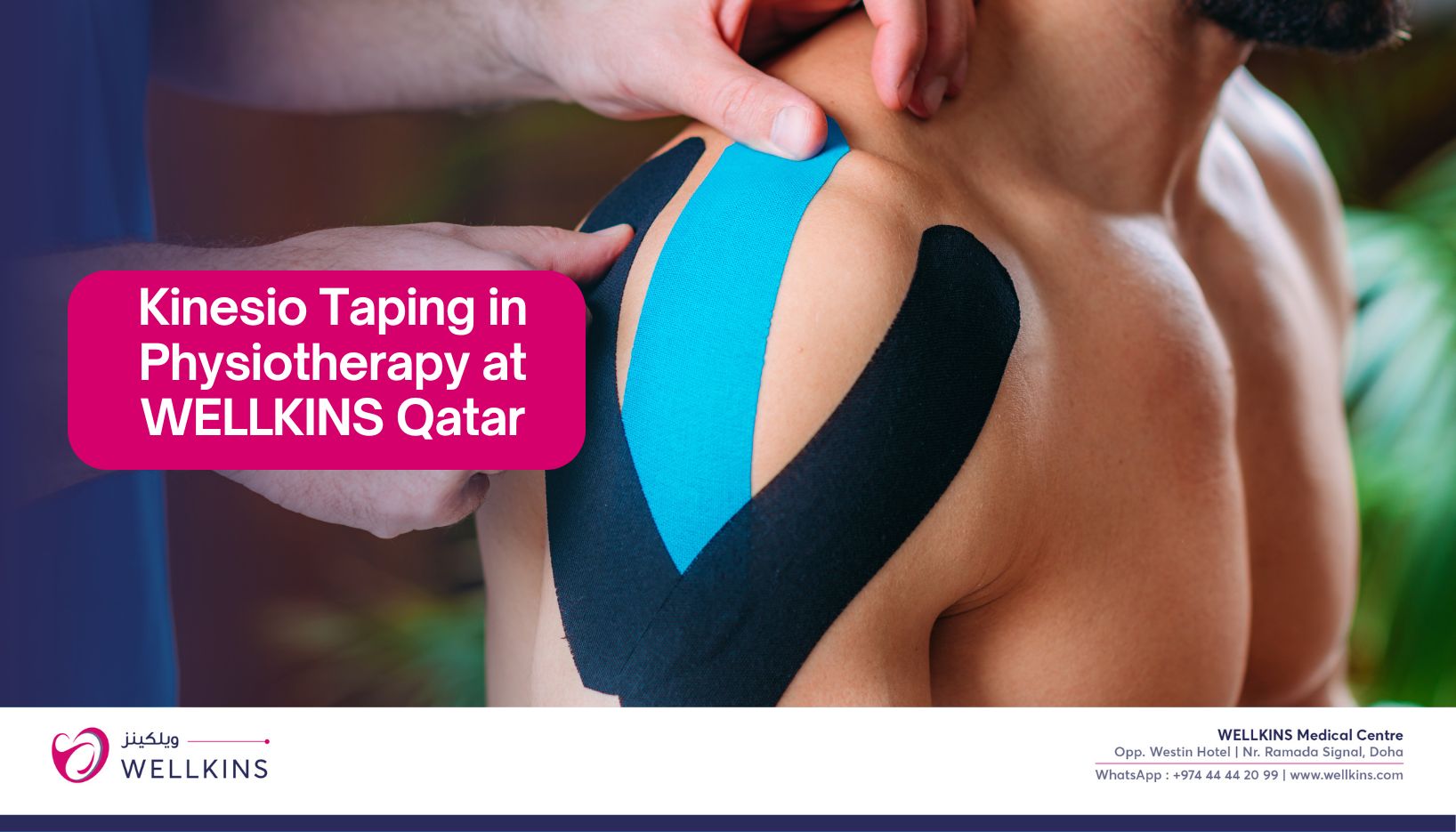Author: Ancy P Mathew (Physiotherapist – WELLKINS Medical Centre)
Smart Taping, Better Healing
As a physiotherapist, one of the most versatile and fascinating tools I use in my clinical practice is Kinesio Taping. You’ve probably seen it on athletes — colorful strips of tape strategically applied to shoulders, knees, backs, or even feet. But trust me, Kinesio Taping isn’t just for sports injuries. Its applications go far beyond the playing field.
Let’s break down what Kinesio Taping really is, how it works, and the therapeutic benefits it offers not just for athletes but for anyone dealing with pain, swelling, or dysfunction.
If you’re curious about how Kinesio Taping might benefit you, a consultation with a qualified healthcare professional is always recommended to ensure proper application and integration into your wellness journey.
What is Kinesio Taping?
Kinesio Taping is a therapeutic taping method developed by Dr. Kenzo Kase, a Japanese chiropractor, in the 1970s. Unlike rigid athletic taping that restricts movement, Kinesio Tape is designed to facilitate movement while providing support, stability, and pain relief.
The tape itself is made of:
· Cotton with acrylic adhesive
· Water-resistant and breathable
· Elastic properties (can stretch 30-40% of its resting length, mimicking skin)

How Does Kinesio Tape Work?
Kinesio Tape is flexible, skin-friendly, and breathable — designed to support your body’s natural healing while allowing full range of motion.
The tape mimics the elasticity of human skin and is made of high-grade cotton with a heat-activated acrylic adhesive. It can be worn for 3-5 days and is water-resistant, making it perfect for daily life, sports, and even showers!
Kinesio Tape interacts with the skin and underlying structures to create a subtle lifting effect. This lift increases space between the skin and the muscles, fascia, or joints beneath it. This change can improve several physiological processes.
Benefits of Kinesio Taping in Physiotherapy
Kinesio Taping has wide applications in both musculoskeletal and neurological rehab. Some of the key benefits include:
1. Pain Modulation
2. Improved Circulation & Lymphatic Drainage
3. Muscle Facilitation or Inhibition
4. Joint Support and Proprioception
5. Decreases Swelling and Inflammation
6. Enhances Muscle Function
7. Improves Posture and Alignment
8. Supports Injured Structures
9. Psychological Confidence
Common Conditions Treated with Kinesio Taping
· Neck and Back Pain
· Shoulder Impingement
· Knee Pain (Patellofemoral syndrome, ACL rehab)
· Ankle Sprains
· Tennis/Golfer’s Elbow
· Carpal Tunnel Syndrome
· Plantar Fasciitis
· Lymphedema
· Post-surgical recovery
Don’t Miss This!
· Always get taped by a trained professional (like your physiotherapist) to ensure correct technique and application.
· Kinesio Tape can be worn for 3-5 days depending on skin type and activity level.
· It is latex-free and hypoallergenic, but patch testing is always recommended for sensitive skin.
Kinesio Taping may look simple, but when applied correctly, it’s a powerful tool to support healing, relieve pain, and restore function. Whether you’re a weekend warrior, a new mom, or someone managing chronic joint issues — Kinesio Taping might just be the gentle nudge your body needs to get back in motion.
Is Kinesio Taping Right for You?
If you’re experiencing pain, swelling, weakness, or imbalance — Kinesio Taping may be the non-invasive solution you’ve been looking for. It’s safe for kids, adults, athletes, postpartum mothers, and even seniors.
Book a consultation at Wellkins. Read more about the physiotherapy services at wellkins here: https://wellkins.com/physiotherapy/







